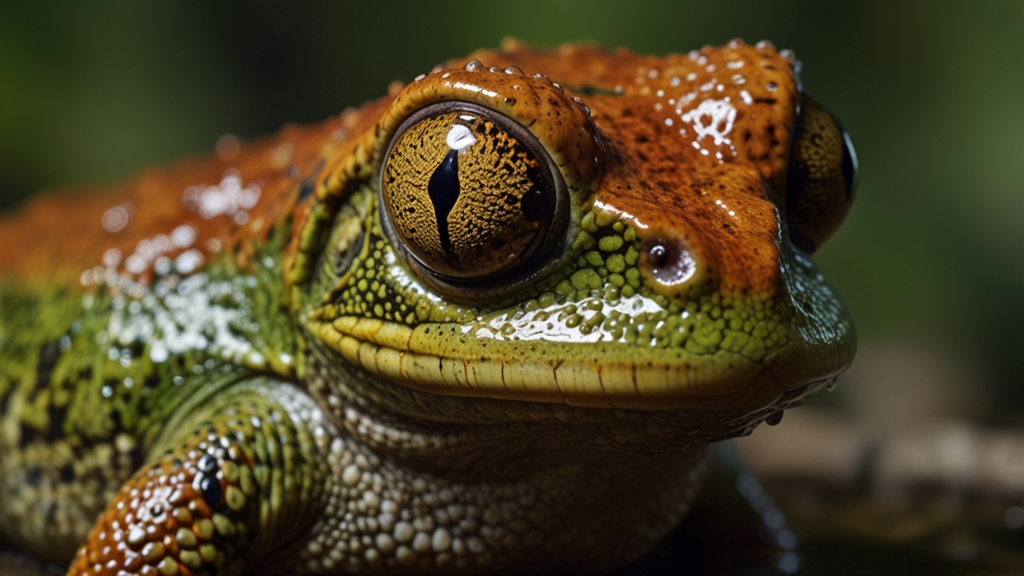Tales of Survival: How Marine Life Adapts to Extreme Conditions
Our oceans are a vast and enigmatic expanse, teeming with life that has ingeniously adapted to diverse and often extreme conditions. From the crushing pressures of the deep sea to the searing heat of hydrothermal vents, marine organisms exhibit extraordinary survival strategies. These fascinating tales of adaptability not only highlight the resilience of marine life but also inspire awe in the face of nature's ingenuity.
The Deep Sea: A World of Darkness and Pressure
The deep sea, extending beyond 200 meters from the ocean's surface, is a world of perpetual darkness, extreme pressure, and frigid temperatures. Yet, it is home to an array of uniquely adapted species. With no sunlight to rely on for photosynthesis, deep-sea creatures have developed remarkable ways to survive in this shadowy abyss.
"The deep sea is Earth's final frontier, hiding secrets and marvels beyond our wildest imaginations." - Dr. Sylvia Earle, Marine Biologist
Deep-sea fish like the anglerfish have evolved bioluminescent lures to attract prey in the pitch-blackness. Their bodies are specially designed to withstand the intense pressures of the deep, with flexible bones and flesh that prevent them from being crushed. Additionally, many of these creatures have slow metabolisms, allowing them to conserve energy in an environment where food is scarce.
Hydrothermal Vents: Living in Scalding Heat
Hydrothermal vents are another extreme marine environment, where superheated, mineral-rich water spews from cracks in the ocean floor. These vents, first discovered in the late 1970s, are home to some of the most extraordinary organisms on Earth.
Tube worms, for instance, thrive in these extreme conditions by forming symbiotic relationships with chemosynthetic bacteria. These bacteria convert toxic chemicals from the vents into organic compounds that nourish their hosts. This astonishing mutualism allows tube worms to live in an ecosystem devoid of sunlight, defying traditional notions of life dependence on photosynthesis.
"Hydrothermal vent communities have revolutionized our understanding of life and ecosystems." - Dr. Cindy Lee Van Dover, Oceanographer
Polar Regions: Mastering the Art of Cold
Polar regions, characterized by their icy waters and sub-zero temperatures, present another set of challenges for marine life. Penguins, seals, and polar fish have all developed unique adaptations to survive in these frosty environments.
Antifreeze proteins in the blood of some polar fish prevent ice crystals from forming, allowing them to swim and hunt in freezing waters. Seals and penguins, on the other hand, have thick layers of blubber and specialized circulation systems to maintain body heat. Moreover, many polar species exhibit behaviors such as huddling and seasonal migration to cope with the severe cold.
Surviving Submerged Deserts: The Great Salt Flats
While oceans are typically thought of as vast, saline expanses, certain marine environments can become exceptionally hypersaline. The Great Salt Flats, located in the brine-saturated extreme environments of marine salt pans, are a prime example.
Brine shrimp and other extremophiles have adapted to tolerate the high salinity levels of these "marine deserts." These organisms can often enter states of cryptobiosis, essentially pausing their metabolic processes to survive prolonged periods of high salinity or even desiccation. This ability to endure and revive under extreme conditions underscores the remarkable versatility of marine life.
Conclusion: The Unyielding Spirit of Adaptation
The tales of survival in our oceans are a testament to life's extraordinary ability to adapt to the harshest conditions. From the lightless depths to the boiling waters of hydrothermal vents, and the frigid polar seas to hypersaline environments, marine organisms have evolved in astonishing ways to endure and thrive.
These stories of survival not only deepen our appreciation for the resilience of marine life but also underscore the importance of preserving our oceans. As we continue to explore and learn from these remarkable ecosystems, we must also take steps to protect them, ensuring that these incredible tales of adaptation can continue to unfold for generations to come.








